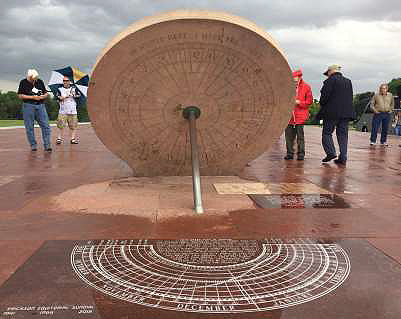- Details
- Hits: 1971
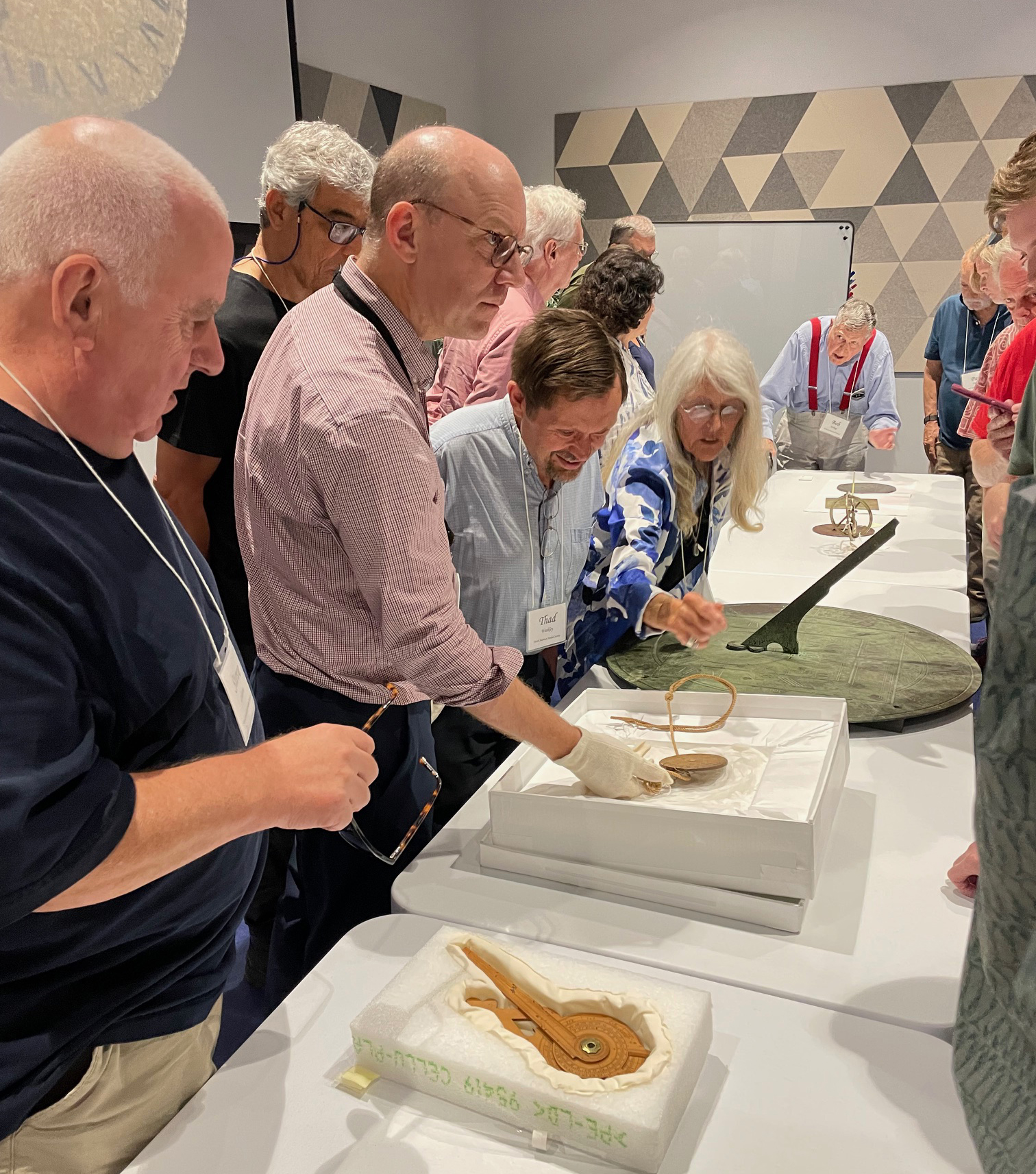 The annual NASS Conference was held 7-10 August, 2025 in Ottawa. As usual, the conference began late Thursday afternoon with an introduction social and a "grab bag give away", taking your chances with tickets to win the bag's prize. Will Grant was the final winner of the Walton Double Planar Polar Sundial, but Paul Ulbrich beat the statistic odds and won this prize three times, ultimately conceding the dial to Will.
The annual NASS Conference was held 7-10 August, 2025 in Ottawa. As usual, the conference began late Thursday afternoon with an introduction social and a "grab bag give away", taking your chances with tickets to win the bag's prize. Will Grant was the final winner of the Walton Double Planar Polar Sundial, but Paul Ulbrich beat the statistic odds and won this prize three times, ultimately conceding the dial to Will.
Friday was a bus tour of Ottawa dials, including the corner dials at the Mother House of the Sisters of Charity (NASS #127) and the hemispherium dial originally located in Rideau Falls Park, but now located in Rockcliffe Park Pavillion (NASS #449). The highlight of the tour was a visit to the Canada Science and Technology Museum. We were greeted by David Pantalony, Curator of Science and Medicine, who introduced us to the archival collection of sundials and solar compasses. This was followed by historical remarks from Jean-François Lozier, Curator, French North America of the Canadian Museum of History. After examining dials (look but don't touch) we paused for lunch in the Archive room. The day ended at our Ottawa hosts home where Mike Moghadam showed his sundial and his wife Esther and family provided refreshments.
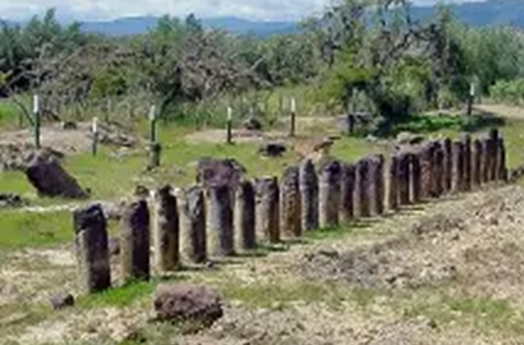 Saturday and Sunday consisted of a wide variety of dialing presentations. Frank King presented a double header on "Eine Block Sonnenuhr" and the mystery of the seven dials woodcut. Others discussed sundial projects (Paul Ulbrich, Mark Montgomery), odd sundials (Fred Sawyer), vector mathematics for sundials (Roger Goyder, Zoon Nguyen and Evan Boxer Cook), the sunlight itself and how it affects bio-rhythms (Pam Morris), navigating in the Arctic (Tom Kreyche), trips to exotic sundials (Geoff Parsons) and Will Grant's trip to Columbia and the Muisica Indian megaliths. All this and more. Read the attached Retrospective for details.
Saturday and Sunday consisted of a wide variety of dialing presentations. Frank King presented a double header on "Eine Block Sonnenuhr" and the mystery of the seven dials woodcut. Others discussed sundial projects (Paul Ulbrich, Mark Montgomery), odd sundials (Fred Sawyer), vector mathematics for sundials (Roger Goyder, Zoon Nguyen and Evan Boxer Cook), the sunlight itself and how it affects bio-rhythms (Pam Morris), navigating in the Arctic (Tom Kreyche), trips to exotic sundials (Geoff Parsons) and Will Grant's trip to Columbia and the Muisica Indian megaliths. All this and more. Read the attached Retrospective for details.
Group photo at Dominion Observatory in front of Bldg 9, the dome for the Astrograph seen at the museum.
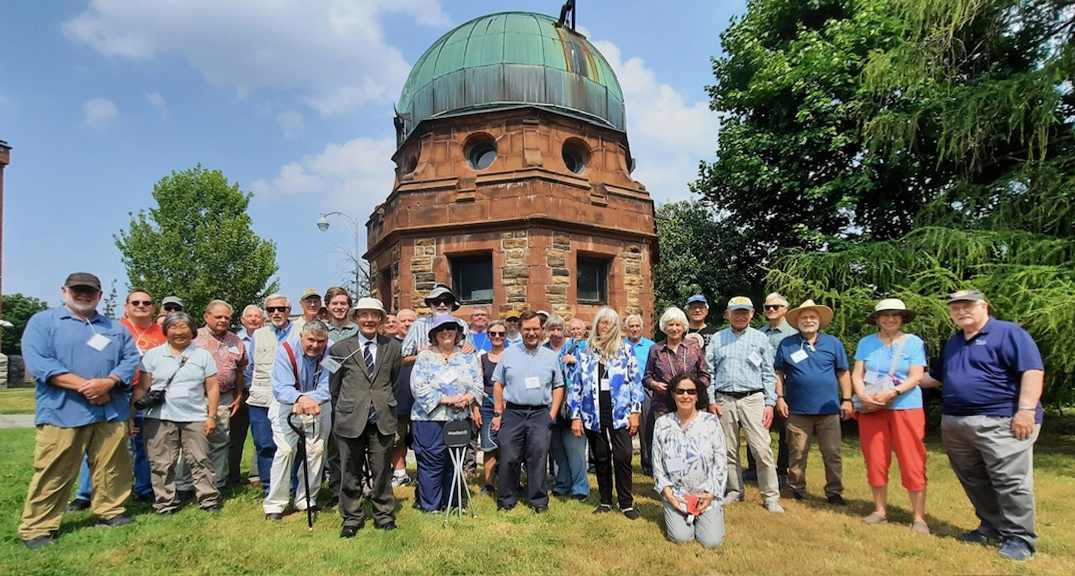
12 (Back Row Left to Right) Steve Johnson, Bob & Bo Manning (barely visible), Bill Thibault, Geoff Parson, Jack Aubert, Mark Montgomery, Marvin Taylor (barely visible), Evan Boxer-Cook, Mike Moghadam, Steve Lelievre, Jeff Brewer, Maddy Lelievre, Russell Goyder, Christine Northeast, Jim Stegenga, Will Grant, José Montes, Tom Kreyche. (Front Row Left to Right) Dave & Joyce Robinson, Bob Kellogg, Frank King, Bryan & Kathy Preas, Thad Weakley, Pam Morris, Chris & Roger Bailey, Paul Ulbrich, Phil & Fred Sawyer. (Center-Front) Martha Villegas. Not in the photo were Marc Boon & Susan Hayes, Lizzy Longsworth, Phyllis Montgomery and Kate Aubert.
- Details
- Hits: 3380
|
|
The 2024 NASS Conference was held in Vancouver, B.C. June 20-23. As always, the conference opened on Thrsday evening the 20th with a host of door prizes, including two Equation of Time Ball Caps (Peggy Gunnerson & Marc Boone), Sundials: History, Art, People (Len Berggren), and many more items and winners.
The Friday bus tour started at Highlands Elementary School to view a Split Analemmatic Sundial by Brian Albinson (NASS #926), then to VanDusen Gardens to see Gerhard Class' Equatorial Dial (NASS #931). Lunch followed at a neighborhood pub-restaurant. To finish the afternoon, the tour visited Hours to Sunset dial at Cambie Park Community Garden (NASS #919), Simon Fraser University open-analemma equatorial (NASS #930). The last stop was at Len and Tasoula Berggren's residence with more sundials and refreshments.
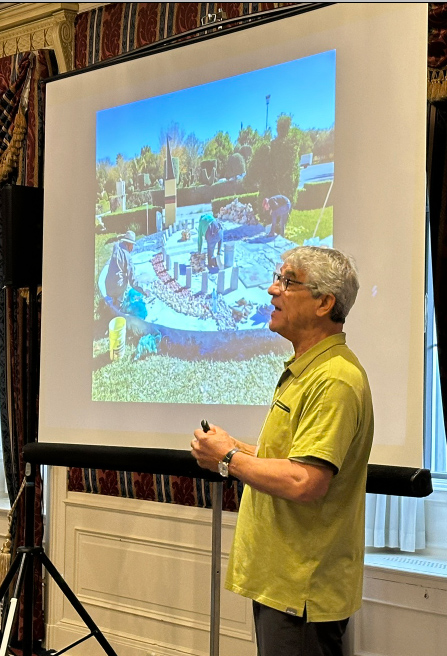 José Montes presents the design of two analemmatic sundials José Montes presents the design of two analemmatic sundials |
The conference presentations included Burt's Solar Compass (Mark Montgomery, Realizing a Dream to construct a sundial (Mike Moghadam). A visit to Santa Maria degli Angeli to observe the meridian line(Tom Kreyche), An Azimuthal Volvelle Sundial (Fred Sawyer), Sundials as an Art Form (Frank King), Sciatheric Spirals (Peggy Gennerson), Canmore Sundial (Roger Bailey), The Life and Times of the Connecticut College Sundial (Tom Kreysche), The Oronce Fine Quadrant - Some Additional Thoughts (Frank King), Retrograde and the Sundial of Ahaz (Fred Sawyer) where the original Hebrew wording described retrograde movement of the shadow on a stairway, rather than time going backwards on a sundial,Two Kinds of Time: Repurposing an Atlas Dial Found at Tor Pateno (James Evans). Finding Time: Developing BC Gnomonics (Evan Boxer-Cook), Two Commemorative Analemmatic Sundials (Jose Montes), a short video on 3D Printing Complex Sundials (Bob Kellogg).
At the annual Conference Dinner for full participants, they received a 3D-printed Universal Ring Dial (Bob Kellogg) and a small 3D-printed Sayer Equant Sundial (Steve Lelievre) and card-based altitude dials (Roger Harris) plus a set of cutout dials delineated for Vancouver (Heinrich Stocker), The South-Facing Inveresk Dial: A Thomas Ross Conundrum (Frank King), and Comments on the Fort Prince of Wales Sundial (Fred Sawyer).
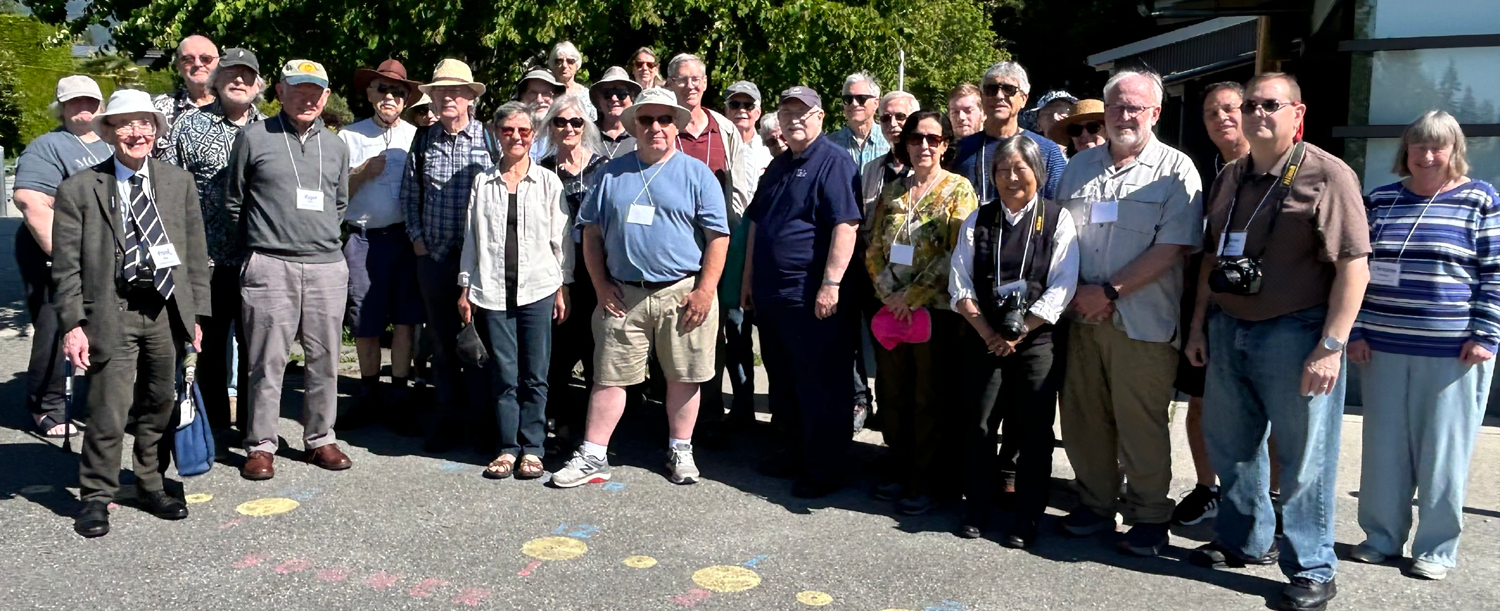
- Details
- Hits: 3829
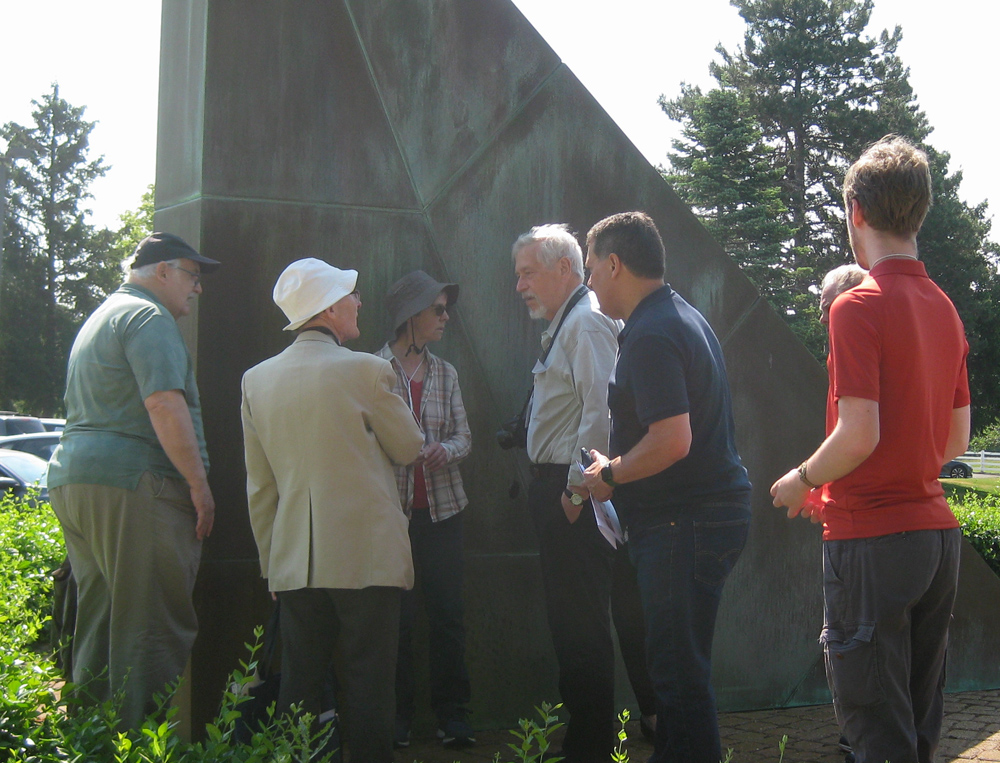
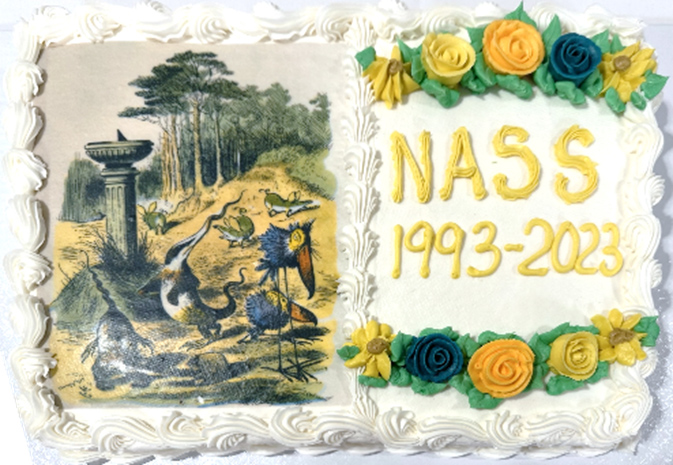 The 28th annual meeting of the North American Sundial Society was held in Ann Arbor, MI from Jun3 8-11, celebrating 30 years of NASS. The conference began Thursday night with a social event of meeting old friends, exchanging sundial stories and a set of sundial related door prizes. On Friday dialists made the traditional sundial tour, with the first stop at Eastern Michigan University’s Sherzer Observatory. Here Thad Weakley was reunited with a dial he had created some 20 years earlier. Among others, we saw the large horizontal dial (NASS #1084) at the Domino’s Pizza Headquarters, the interior cylindrical dial (#1084) at Michigan Memorial Phoenix Laboratory, and the Trebble Clef sundial at the Univ. of Michigan’s School of Music (#335).
The 28th annual meeting of the North American Sundial Society was held in Ann Arbor, MI from Jun3 8-11, celebrating 30 years of NASS. The conference began Thursday night with a social event of meeting old friends, exchanging sundial stories and a set of sundial related door prizes. On Friday dialists made the traditional sundial tour, with the first stop at Eastern Michigan University’s Sherzer Observatory. Here Thad Weakley was reunited with a dial he had created some 20 years earlier. Among others, we saw the large horizontal dial (NASS #1084) at the Domino’s Pizza Headquarters, the interior cylindrical dial (#1084) at Michigan Memorial Phoenix Laboratory, and the Trebble Clef sundial at the Univ. of Michigan’s School of Music (#335).
On Saturday Fred Sawyer presented a sequel to his 2022 presentation on Time Boxes, with this year’s version being his new design of a bifilar Time Box. Delegates received templates for two dials – one showing conventional hours and one for Italian/Babylonian Hours. During the conference Fred Sawyer made several presentations on the bifilar sundial, including the biography of its inventor Hugo Michnik,
Mark Montgomery presented a historical review of lunar volvelles and their most common features with an explanation of their operation. He also discussed moon dials later in the conference.
Other presentations included Jack Aubert’s experience installing a simple vertical sundial on his house. Bob Kellogg discussed the 3D printing of the universal bifilar, which were later handed out at the conference dinner. Dung ‘Zoon’ Nguyen presented a brief history and theory of ceiling dials. Chip Cunningham reviewed his quest to understand solar time and presented his “Axial Dial” and Steve Lelievre talked about creating a unique vertical hour scale dial to tell the hours remaining until sunset. Steve’s second variant shows solar time from 6am to 6pm and was given to delegates as a conference gift.
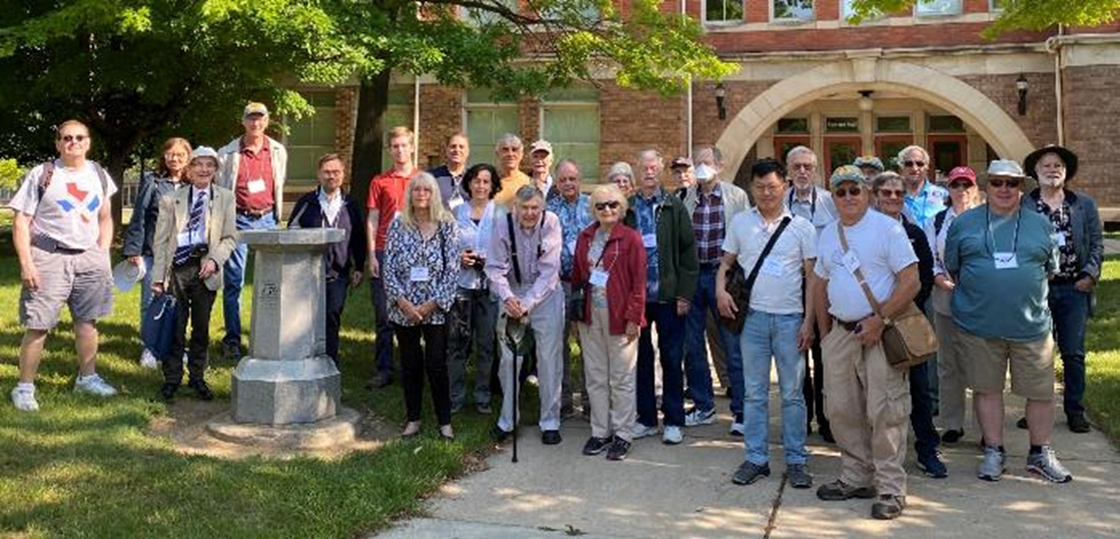
Frank King delved into the layout of antique hour lines on the famous Queens Dial in Cambridge. The lines are drawn straight, but as Frank shows, they are part of a hyperbola. As the latitude approaches 67°, the lines develop a noticeable bend.
On Sunday, Frank King discused what happens if a highly polished gnomon is used for a planar dial. Depending on latitude and time of day, the usual shadows of a gnomon are accompanied by symmetrically-positioned bright equivalents.
Paul Ulrich’s talk returned us to the practicalities of making sundials. Paul presented a photo-catalog of a wonderfully diverse collection of usual and unusual dials in ceramic, metal, wood, string, card and other media. His emphasis was to “have fun with discovery.” Steve Lelievre describing his use of vector algebra in treating the outline of a (rectangular) window as a kind of bifilar sundial. And Steve Lelievre described his use of vector algebra in treating the outline of a (rectangular) window dual as a kind of bifilar sundial. The final talk was presented by Bob Kellogg and covered his work, in progress, to design and construct a tellurion (a mechanical model of the sun-earth-moon system).
- Details
- Hits: 7767
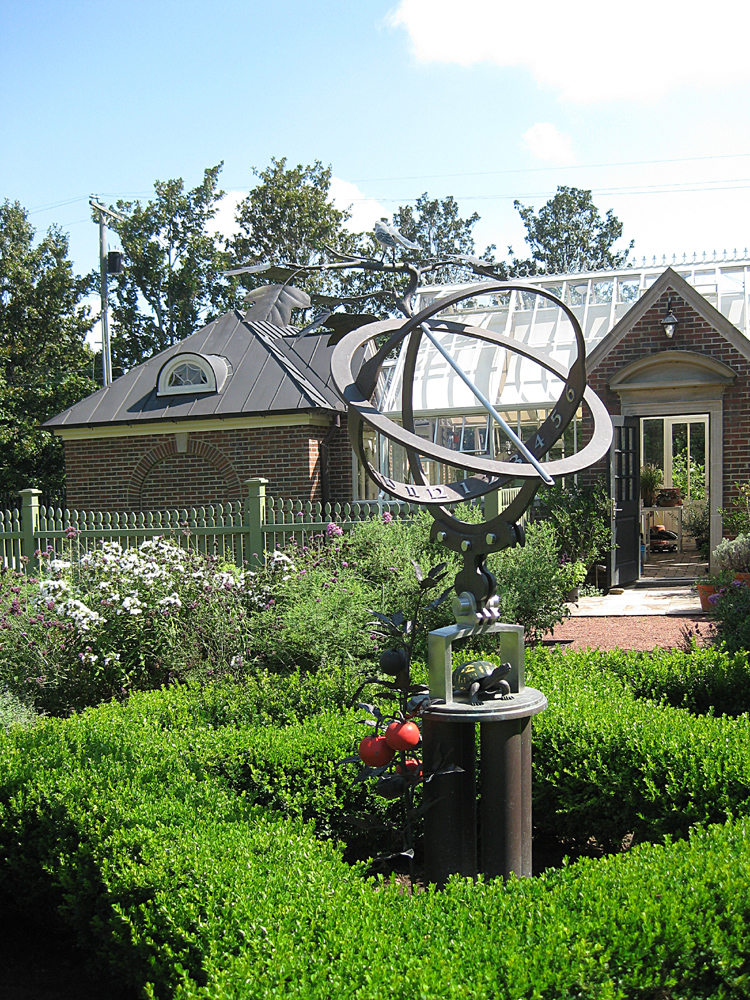 The 27th annual meeting of the North American Sundial Society was held at the Holiday Inn – Vanderbilt in Nashville from 11-14 August. The Thursday night social included meeting old friends, exchanging stories about sundials, and for a lucky dozen-plus attendees, receiving sundial books and related door prizes. One of the highlights of Friday’s sundial tour was seeing the symbolic Armillary Sphere at the Tennessee Governor’s Residence. There are three red enameled tomatoes (state fruit) for stars in the state flag, an eastern box turtle (state reptile), tulip poplar (state tree) branches at the north end of the gnomon, and a mockingbird (state bird), resting in the branches.
The 27th annual meeting of the North American Sundial Society was held at the Holiday Inn – Vanderbilt in Nashville from 11-14 August. The Thursday night social included meeting old friends, exchanging stories about sundials, and for a lucky dozen-plus attendees, receiving sundial books and related door prizes. One of the highlights of Friday’s sundial tour was seeing the symbolic Armillary Sphere at the Tennessee Governor’s Residence. There are three red enameled tomatoes (state fruit) for stars in the state flag, an eastern box turtle (state reptile), tulip poplar (state tree) branches at the north end of the gnomon, and a mockingbird (state bird), resting in the branches.
The NASS group also visited the Vanderbilt Equatorial Dial (NASS Registry #583), Sundial Park (#1055), a number of dials at Cheekwood Botanical Gardens, including a noteable dodecahedral dial (#1051). The tour concluded visiting Montgomery Academy to see a vertical dial designed by Kenneth Lynch & Sons with the help of Fred Sawyer in 1999 (#425).
While at the Governor's Residence, the NASS Group photo was snapped:
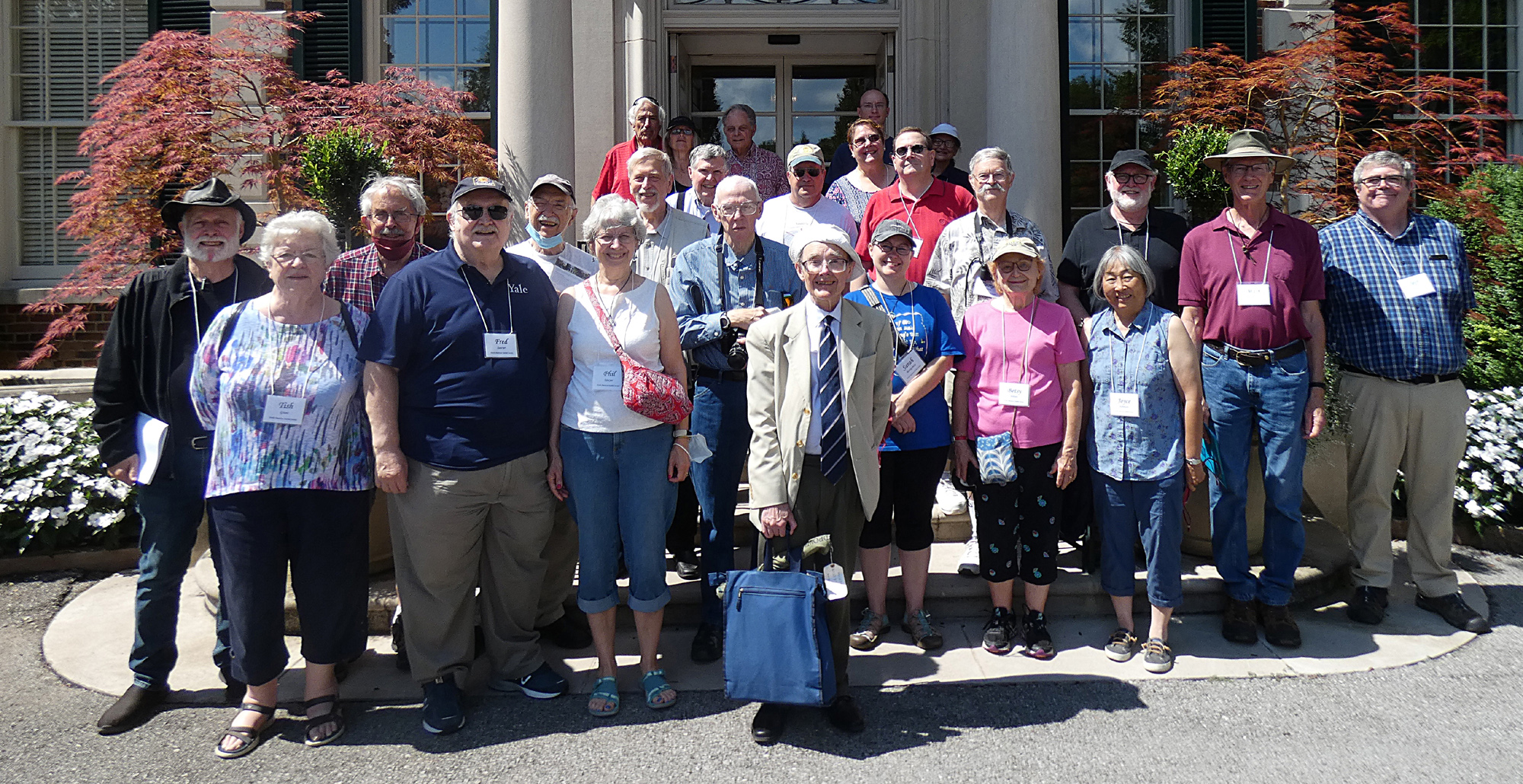
2022 NASS Conference Group Photo. From left to right and front to back: Paul Ulbrich, Tish Grant, George Perkins, Fred Sawyer, Len Berggren, Phil Sawyer, Jack Aubert, Will Grant, Marvin Taylor, Bob Kellogg, Pam Morris, Frank King, Jeff Kretsch, Bill Thibault, Sarah Montgomery, Steve Johnson, Gloria Mielke, Aaron Montgomery, Betsy Wilson, George Wilson, Phyllis Montgomery, Joyce Robinson, Dave Robinson, Mark Montgomery, Jeff Brewer. Not shown: Susan Haynes and Marc Boone.
- Details
- Hits: 7448
The North American Sundial Society, after by-passing the 2020 Conference due to Covid restrictions, held the 26th annual meeting from August 5th - 8th at the Hilton Garden Inn, Center City, Philadelphia. The venue was similar to past conferences: Thursday night social and door prizes for attendees, Friday a bus tour of 11 sundials in the Philadelphia area, Saturday sundial presentations and annual dinner, finishing on Sunday with more sundial presentations and the annual general meeting (AGM).The dial tour took us walking through Philadelphia parks and arboratums and visits to University of Pennsylvania, Swarthmore College, and Haverford College.
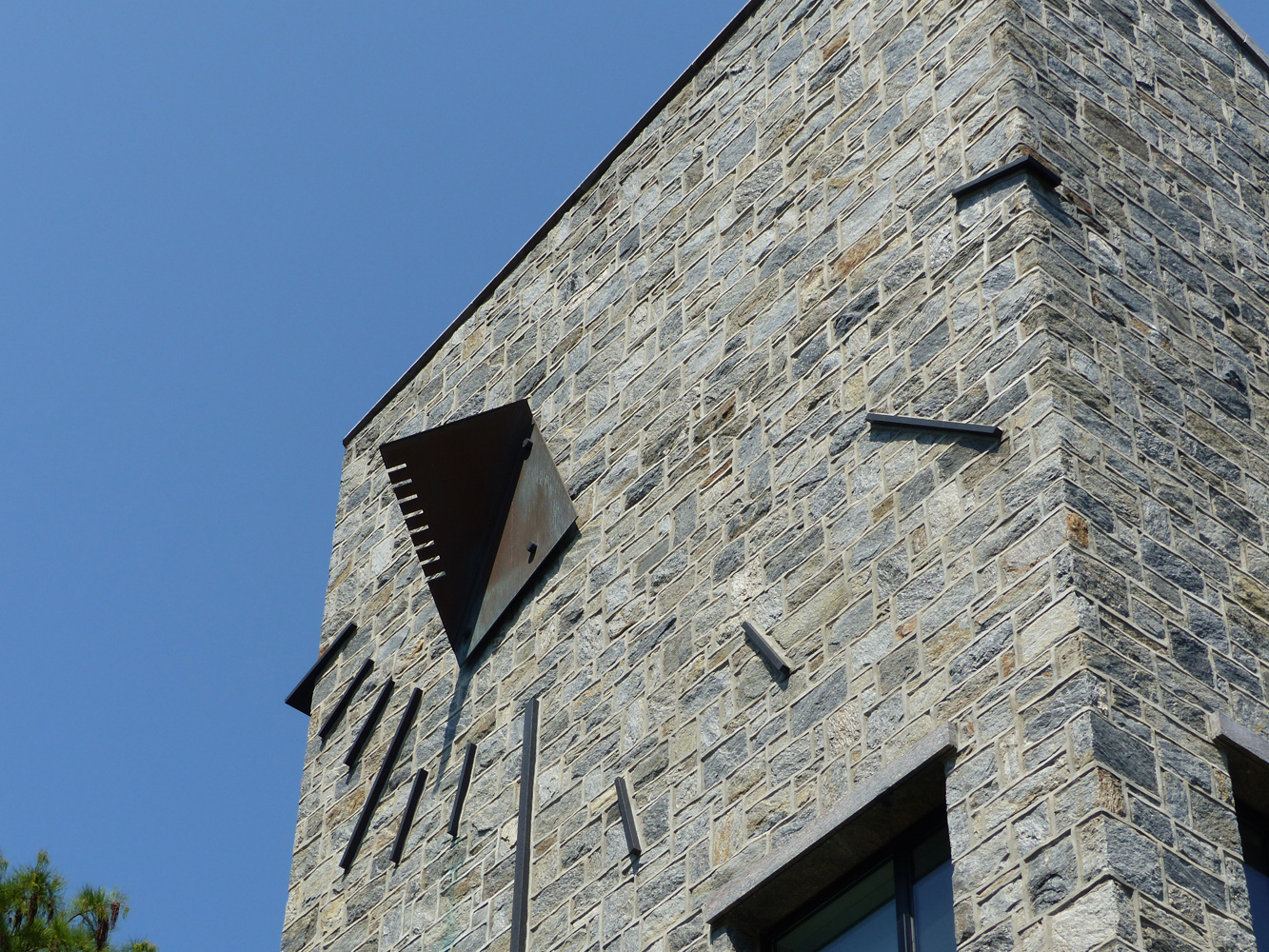 At Swarthmore we saw the modern vertical declining dial on Kohlberg Hall, designed by Martin Cowan. Frederick Orthlieb, professor and chair of the Dept of Engineering at Swarthmore "had a part in locating the bent-plate gnomon so as to give correct indications on the vertical wall. As installed, the gnomon's indicating edge (which lies on a Polar Axis) casts quite a short shadow in Autumn and Winter and requires some observing skill to make a close estimate of indicated time, but in Spring and Summer the longer shadow moves over the granite hour marks very plainly."
At Swarthmore we saw the modern vertical declining dial on Kohlberg Hall, designed by Martin Cowan. Frederick Orthlieb, professor and chair of the Dept of Engineering at Swarthmore "had a part in locating the bent-plate gnomon so as to give correct indications on the vertical wall. As installed, the gnomon's indicating edge (which lies on a Polar Axis) casts quite a short shadow in Autumn and Winter and requires some observing skill to make a close estimate of indicated time, but in Spring and Summer the longer shadow moves over the granite hour marks very plainly."
For the annual group photo attendees gathered around the "Point Where Things Change", a N-S meridian dial commissioned in 2001 by the Redevelopment Authority of the City of Philadelphia and designed by Michael Grothusen. The dial is on the grounds of Tasepoint Corporate Headquarters.
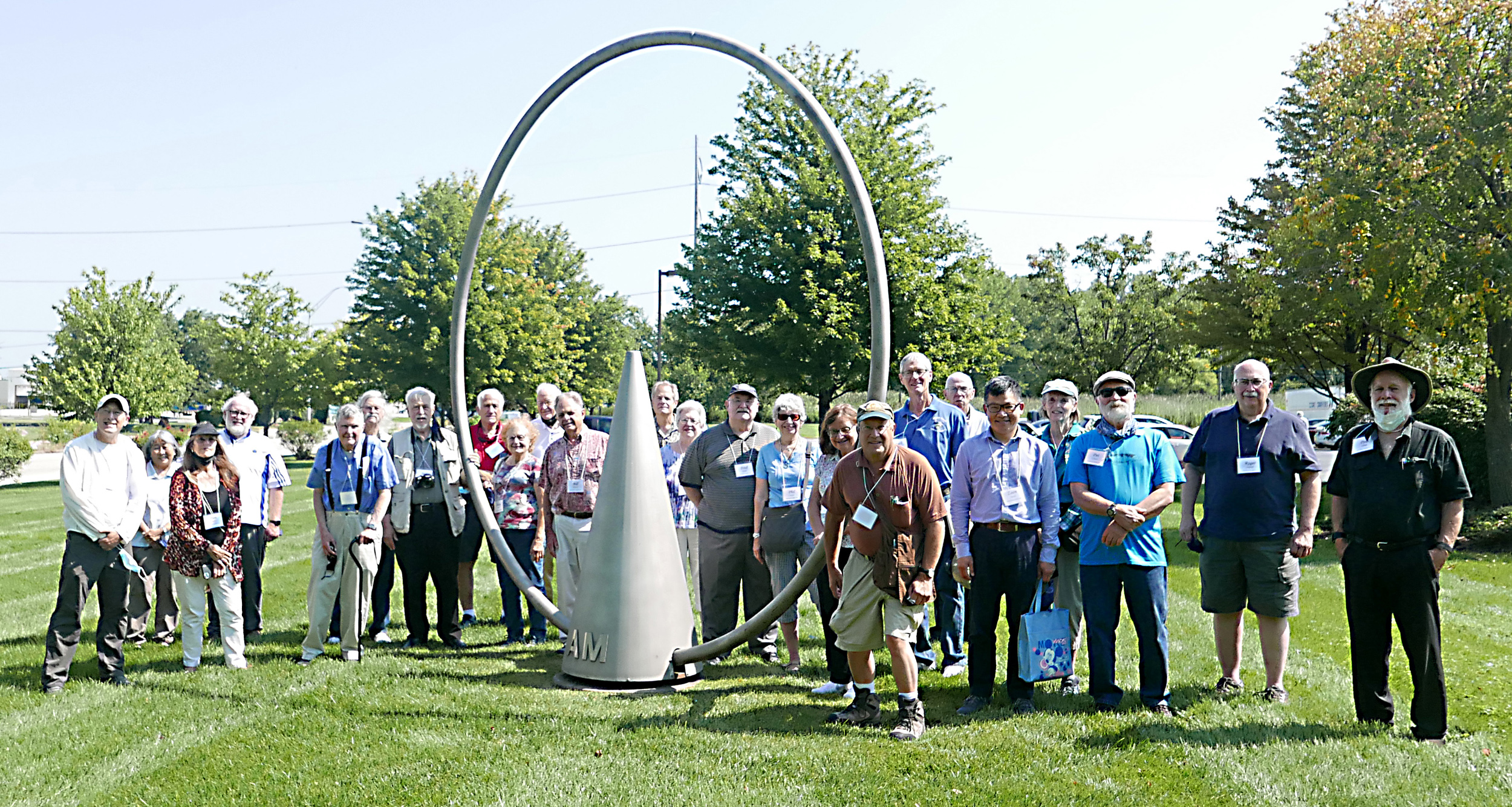
From Left to Right: Bill Gottesman, Joyce Robinson, Pam Morris, David Robinson, Bob Kellogg, George Wilson, Jack Aubert, Will Grant, Betsy Wilson, Jim Holland, Bill Thibault, Art Paque, Tish Grant, Fred Sawyer, Philomena Sawyer, Phyllis Montgomery, Jeff Kretsch , Mark Montgomery, Marvin Taylor, Zoon Nguyen, Kate Aubert, Pat O'Hearn, Roger Dignard, Paul Ulbrich.
- Details
- Hits: 8900
|
Visiting Cranmer Park and Sundial in the Rain |
The North American Sundial Society convened in Denver, CO from June 20th - 23rd. Atendees tour the city for sundials including the Kent Denver School's astrometric tower that shows a pinhole image of the sunthroughout the year. And of course there was a stop at Cranmer Park to see the new plaza and restored Equatorial sundial. Does it matter that we toured this dial in the pouring rain? At the Hyatt Hotel safely indoors from the weather NASS speakers presented a wide range of topics including "Is there room for Sundials in Modern Pop Culture by Shelby and Will Grant. Take a look at your next favorite British TV show and see if you can find a sundial. Bill Gottesman talked about a sculpture concept based on shadow cones and was kind enough to present to each of the attendees with their own "Shadowstice" 3D printed sculpture.
The theme of conference talks seemed to center around the shape of sundial gnomons. Frank King, chairman of the BSS, discussed a range of consequences of using gnomons with various cross sections, while Steve Lelievre presented his latest version of a Foster Lambert dial witha self-supporting gnomon of elliptical cross section, showing an example that he 3D printed. Then Fred Sawyer described a new polar envelope dial that casts a very wide shadow, showing that for a range of latitudes you can create a gnomon where both shadow edges can be used to tell the time. Both the Foster Lambert and Polar Envelope dials have simple rotational adjustment allowing easy and precise correction for the Equation of Time.
This year's Sawyer Dialing Prize went to Denis Savoie for his long career in education, research and publications related to in gnomonics and his outstanding portfolio of public sundial designs and restorations.

Attendees of the June 2019 NASS Conference in Denver
- Details
- Hits: 10369
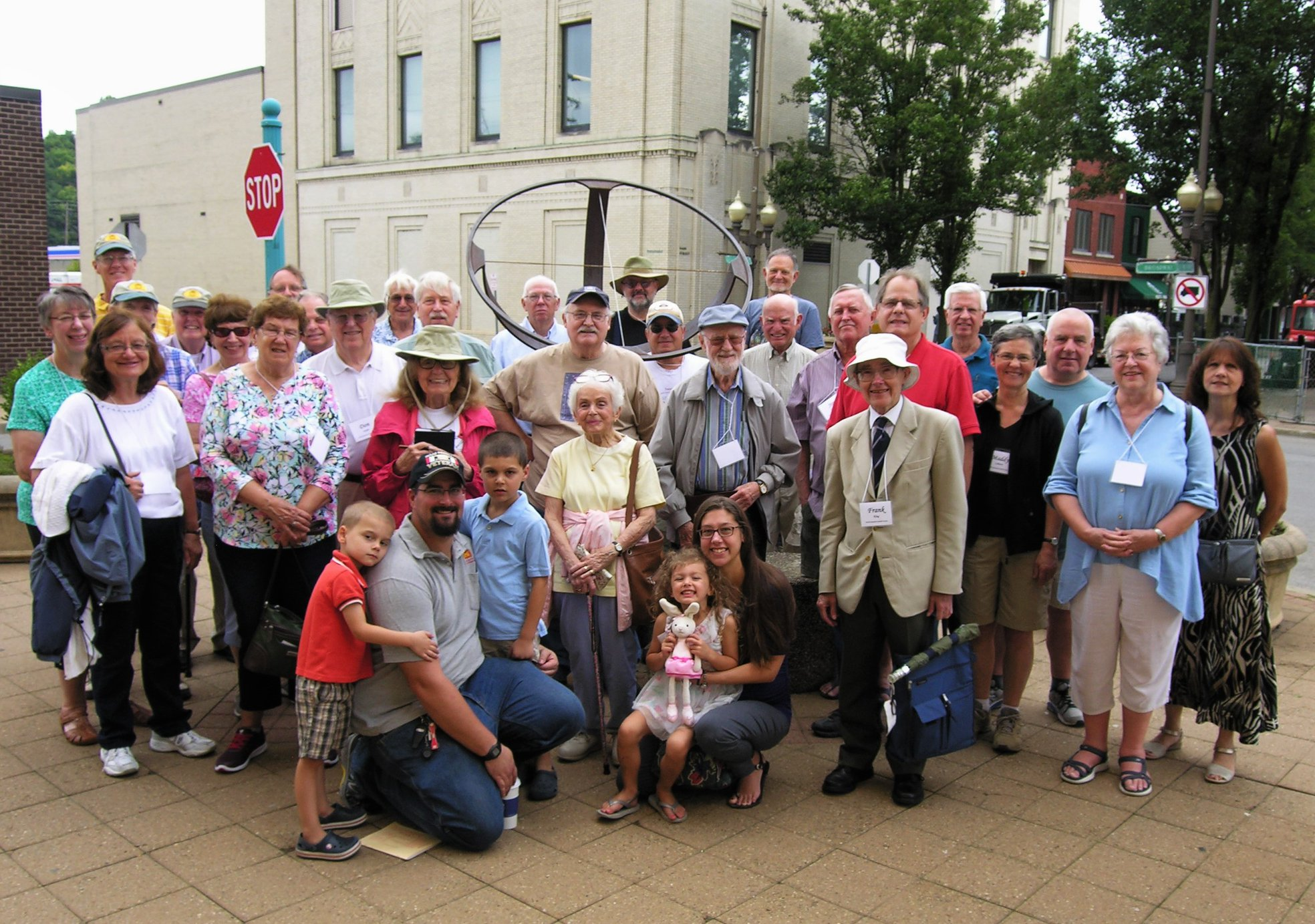 The North American Sundial Society held their annual sundial conference in Pittsburgh, a four day affair for gnomonists to convene and share their enthusiasm for all things sundials. This conference was special as the NASS celebrated the society's 25th anniversary. Starting in 1993 with only a handful of dialing enthusiasts, the society has grown to over 250 members extending from North America to all parts of the globe. For this conference NASS members convened from around the world representing countries of Canada, the United Kingdom, Brazil and Australia. Scheduled to attend but intervened by last minute issues preventing their attendance were dialists from Mexico and Italy. All came with one objective - to share their enthusiasm for sundials.
The North American Sundial Society held their annual sundial conference in Pittsburgh, a four day affair for gnomonists to convene and share their enthusiasm for all things sundials. This conference was special as the NASS celebrated the society's 25th anniversary. Starting in 1993 with only a handful of dialing enthusiasts, the society has grown to over 250 members extending from North America to all parts of the globe. For this conference NASS members convened from around the world representing countries of Canada, the United Kingdom, Brazil and Australia. Scheduled to attend but intervened by last minute issues preventing their attendance were dialists from Mexico and Italy. All came with one objective - to share their enthusiasm for sundials.
On Thursday evening Aug 16th the dialists gathered at the Garden Hilton in downtown Pittsburgh to participate in drawings for assorted door prizes including sundials and books on dialing. On Friday all boarded a charter bus to view the sundials of Pittsburgh, taking a tour that included a large steel equatorial designed and built by Anthony Vitale, a multi-faced dial at Old Economy Village dating to 1825, and a dial commemorating the battle at Bushy Run in 1793 that was found at the site of the Fort Pitt Block House during its 1894 restoration by the Pittsburgh Chapter of the Daughters of the American Revolution who still own and preserve the structure and the sundial. The tour included the dial at Frick Fine Arts Museum (near the geenhouse), the Riverfron Park Sewickley analemmatic (human) sundial, and the large octagonal horizontal sundial at Homewood Cemetery.
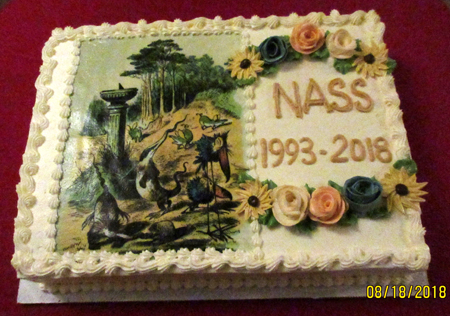 On Saturday and Sunday attendees listed to presentations on ring dials (with a diverson into the history of solving cubic equations), helical sundials (and 3D printing), viking sunstones (with a description of the birefracting material calcite), lunar sundials (Sciathericum Seleniacum), van Schooten and Dialing Scales (published in 1657), Time for Rita's (a vertical declining dial designed for an ice cream store in Elizabethtown, PA), and zenith days below the Tropic of Capricorn (and a year-long photograph of the analemma over the El Cerrito pyramid in Querétaro, Mexico),and much, much more. On Saturday evening the Sawyer Dialing Prize was awarded this year to Gianpiero Casalegno from Italy for his achievements in harnessing modern ditital technology to the benefit of tradional dialists around the world. The prize includes an elegant Spectra Sundial by Artisan Industrials (Jim Tallman) and a cash award. Gian has chosen to given the cash award as a donation to the Bellingham Mural Project lead by Sasch Stephens. The dial will be dedicated on the coming equinox, Sept. 22.
On Saturday and Sunday attendees listed to presentations on ring dials (with a diverson into the history of solving cubic equations), helical sundials (and 3D printing), viking sunstones (with a description of the birefracting material calcite), lunar sundials (Sciathericum Seleniacum), van Schooten and Dialing Scales (published in 1657), Time for Rita's (a vertical declining dial designed for an ice cream store in Elizabethtown, PA), and zenith days below the Tropic of Capricorn (and a year-long photograph of the analemma over the El Cerrito pyramid in Querétaro, Mexico),and much, much more. On Saturday evening the Sawyer Dialing Prize was awarded this year to Gianpiero Casalegno from Italy for his achievements in harnessing modern ditital technology to the benefit of tradional dialists around the world. The prize includes an elegant Spectra Sundial by Artisan Industrials (Jim Tallman) and a cash award. Gian has chosen to given the cash award as a donation to the Bellingham Mural Project lead by Sasch Stephens. The dial will be dedicated on the coming equinox, Sept. 22.
NASS members enjoyed this year's conference and are now planning for next year's convening, tentatively to be held in Denver, Colorado.
- Details
- Hits: 10553
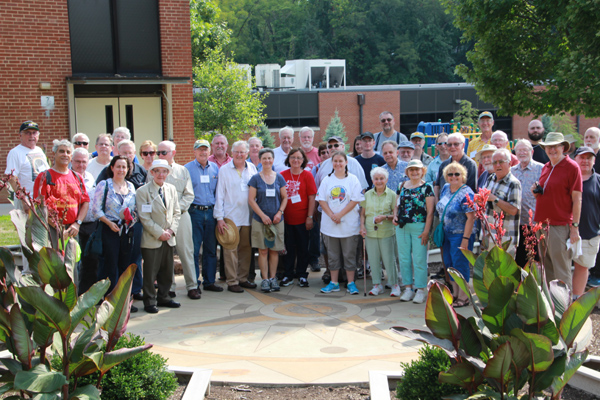
In August 2017 the North American Sundial Society held its annual conference in St. Louis Missouri with a series of well attended talks on the mathematics of sundials, software tools to design sundials, and even videos on YouTube that are about sundials. NASS participants visited local astronomical sites of interest, including the War Memorial Dial in Forest Park. Don Snyder worked with Perry County and Perryville, a town on the eclipse path, to creat a new sundial for the courthouse gardens. Local craftspeople created the dial following Don's design. It, as other significant dials, is in the NASS Sundial Registry available on the web. At the Missouri Botanical Garden attendees saw the Schmoyer Sundial with its analemma shaped gnomon to tell civil time. It was made by Bill Gottesman and donated to the Garden by Don Synder and Bill. Also at the Botanical Garden is the Ottoman dial designed by Roger Bailey, following the design of the horizontal dial at Topkapi Palace in Istanbul. A presentation from Bill Iseminger on the Cahokia Woodhenge discussed the astronomical alignments such as solstice sunrise and sunset. Wood Henge was on the sundial tour itinerary, but due to heavy traffic, was excluded to reach the eclipse viewing site on time (the sun and moon had their schedules that were not subject to change).
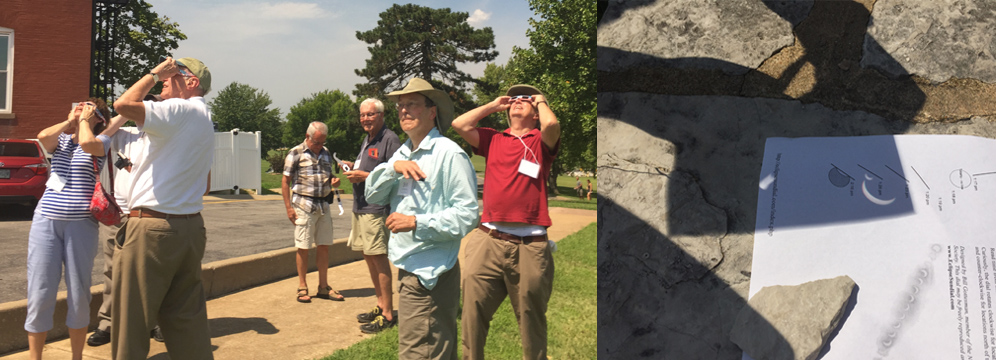 The highlight was a visit to Jefferson Barracks to watch the total solar eclipse on August 21, 2019. All participants were given special safe viewing glasses to protect their eyes before and after totality. With cooperating weather, the eclipse was viewed with devices ranging from a pinhole camera obscura to telescopes with solar filters. A truly spectacular event. Bill Gottesman demonstratee his eclipse "sundial" that used the orientation of the eclipsed sun's cusp orientation as an indicator of time.
The highlight was a visit to Jefferson Barracks to watch the total solar eclipse on August 21, 2019. All participants were given special safe viewing glasses to protect their eyes before and after totality. With cooperating weather, the eclipse was viewed with devices ranging from a pinhole camera obscura to telescopes with solar filters. A truly spectacular event. Bill Gottesman demonstratee his eclipse "sundial" that used the orientation of the eclipsed sun's cusp orientation as an indicator of time.
- Details
- Hits: 15945
Portland Maine WCSH Channel 6 presents local and national news and the usual sports, weather and traffic. But on a recent 207 broadcast, they reported an invasion ... an invasion of sundialists coming to Portland, Maine for their annual conference and their search for a dial made over a century ago by Albert Crehore that might still be somewhere in Portland.
Members of the North American Sundial Society (NASS) take the art and science of sundials very seriously. Watch the video and consider joining NASS for even more sundial adventures. Visit Portland Channel 6 News:

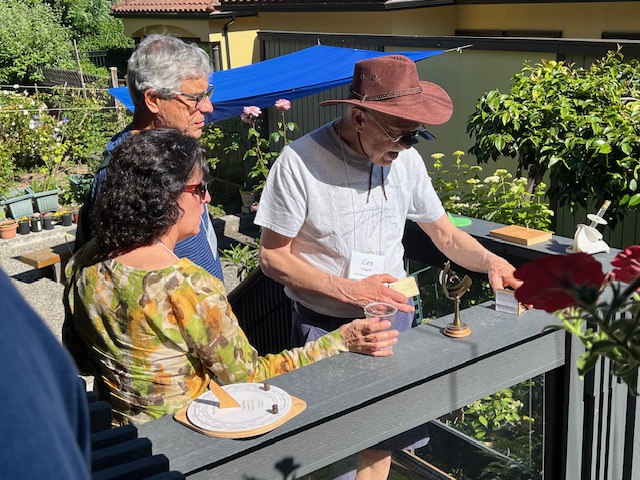 Len Berggren explains his sundials
Len Berggren explains his sundials